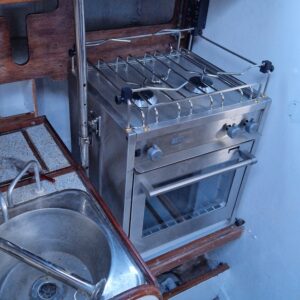
It’s a bit of a beast, the new cooker. This was always going to be a major part of the big refit: A decent cooker. A cooker that wouldn’t break down – and since this is a boat for life, it had to be a cooker for life.
If you have been following this blog for any length of time, you will have seen regular rants about marine cookers – I’ve tried them all: The ancient brass Taylors, an alcohol affair that took my eyebrows off. I had two venerable Flavell Vanessas from the 70s (in beige, of course). I had a very shiny, all stainless steel thing that wasn’t stainless at all.
And on Samsara, I’ve been going through cookers like Wet Wipes at a birthday party for three-year-olds.
When the second Vanessa broke free of its fastenings jumping off a wave a week from The Lizard, I didn’t turn a hair. I had already blamed it for the gas leak and the consequent disastrous experiments with Nutella salad in place of hot food. As soon as I docked at Pendennis, it was going in the marina skip. Already, I had selected its replacement from the Force4 catalogue: All stainless steel this time and with a heroic, salty name – The Neptune 4000. It had flame-failure devices. It had a thermostatic oven. It was the real deal.
It lasted fourteen months. The right-hand flame-failure device packed up. It was going rusty. I sent it back under the guarantee, and Force4 replaced it (I forgot about having to pay a gas fitter £100 to connect the new one).
That lasted eighteen months. The right-hand flame-failure device packed up, and it was going rusty…
There was something wrong here, surely. But when you think about it, boatbuilders are working to a budget – a budget that assumes that even their keenest customer is going to be using the product at weekends only for six months of the year – apart from a two-week cruise in August. So the cooker is only going to be in use for 62 days a year (38 if you assume they eat ashore on Saturday night).
I was using mine almost ten times as much.
So to be fair, my dead cookers had really had a lifespan of 15 years.
Never mind, Samsara was coming up to her 50th birthday. All sorts of things were going rusty. But then I anchored off the Island of Santa Luzia in the Cape Verdes and went ashore just because the book said the island was uninhabited. Don’t you find there is something about uninhabited islands which just cries out for someone to go and inhabit them – even if just for an afternoon?
In fact, I found that it hadn’t always been this way. There was evidence of stone walls poking out of the barren red earth.
When I got back to the beach, I found Santa Luzia had two inhabitants: Ruffian, the big Westerly, had turned up, and Iain swam ashore to invite me to dinner. I remember taking a spare oar, reasoning that if I broke one, I would end up in Panama.
More than that, I remember the cooker. Fiona showed it off like a 1950s TV advert. It was so good they had imported it from their last boat.
Their last boat? It looked brand new.
“It always looks brand new. It doesn’t get rusty because it’s made of absolutely the best materials money can buy.”
- You mean it doesn’t go wrong? The flame-failure devices don’t pack up after a year?
“It’s never gone wrong.”
I determined that I was going to have one of these cookers. It was called a GN Espace. I made a note in my phone.
I started researching GN Espace. I went to see them at the Southampton Boat Show. I asked the price.
Right, OK, so it was never going to break down. I would be a cooker for life (you took it with you when you changed boats). It was seriously expensive. I was used to cookers costing £600. This thing was £2,400!
Also, it weighed 27kg! Even the little knob that locks the pan rack could do double duty on an emergency lead line.
I bought it, of course. This winter’s refit has been so extensive that £2,400 is a mere detail (new standing rigging, new running rigging, new furling gear, chainplates, sails – and don’t even get me started on the Lewmar bill.)
The new cooker is substantially bigger than the old – I think the idea is that I will be able to roast a Christmas dinner for six down among the Abacos. In fact, the oven is going to be used for stowing small electronic items ready for the lightning strike. If ever I light it, I shall be serving roasted microchips.
Anyway, I managed to lift it onto its mountings – having had to demolish the locker behind it in order to give it room to swing. It’s just as well I won’t be taking it out again (Samsara being my last boat, and therefore, everything having to last another 47 years.)
There is only one tiny little fly that needs fishing out of the ointment: When I went to collect the thing from the bijou trading estate somewhere in Hertfordshire, I found them busy developing the new electric version.
Of course! In ten years’ time, we’ll all be running electric boats (and I can’t wait).
I’ve just done the maths: Ten years divided by the eighteen-month life-cycle for the Neptune means buying at least six new cookers. Add another £600 for the gas engineers to fit them, and you still save nearly £2,000 with the GN.
Besides, think of the fun I shall have showing it off…
- There’s a whole chapter about cookers in Book One of The Good Stuff: The Good Stuff: Book One (Oldmansailing)

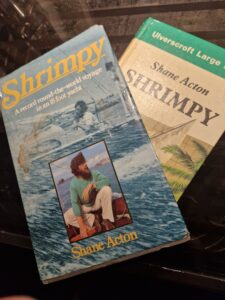
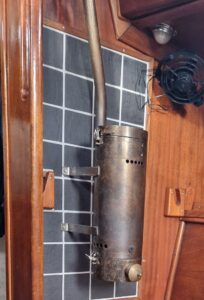
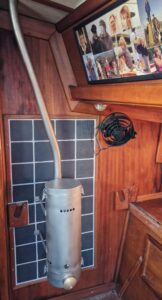


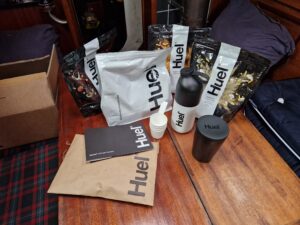
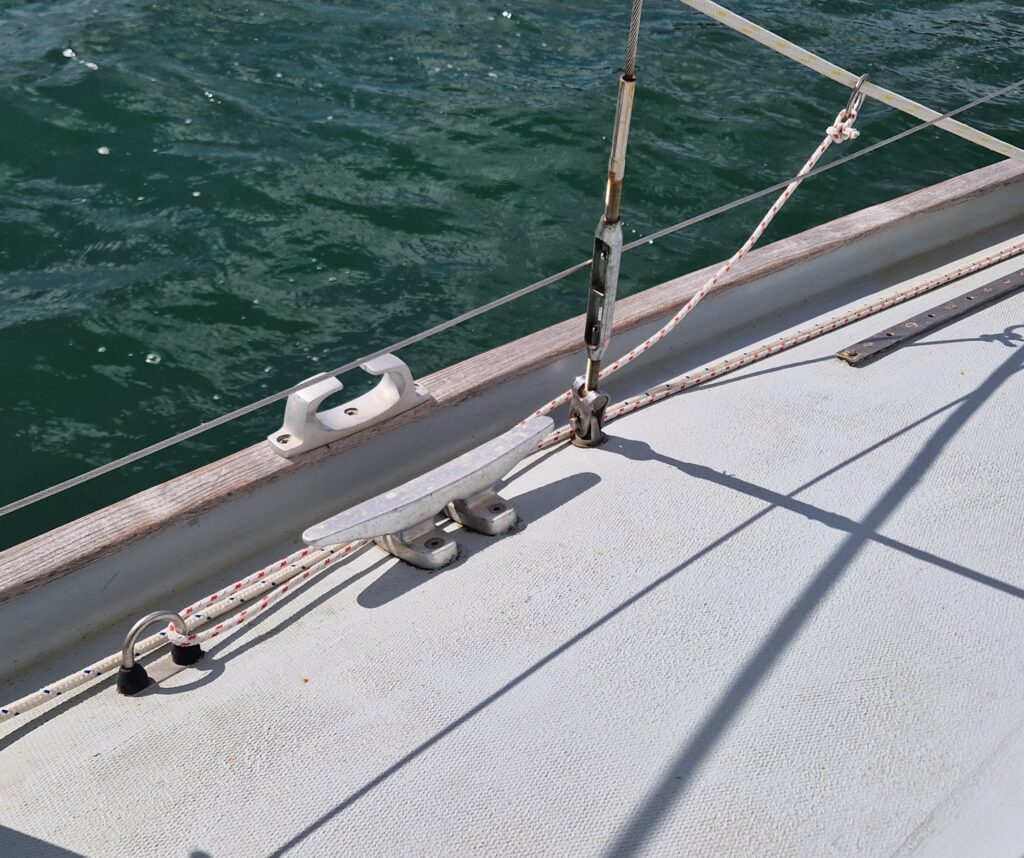
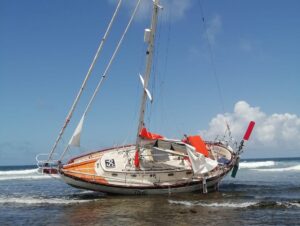


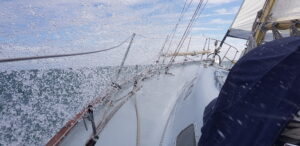
Great story, would love to find book,
Sail safe where ever you go.
Amazon seems to have copies at a more reasonable £38
Gday John I will be following you with great interest, to get a fair dinkum report on its performance.
I hope it works well for you mate.
I have never understood why they are so expensive as they have a pump with a series of filters.
Sounds promising
You did very well with your purchase. I checked on amazon and found I could buy a hard cover version for only $228.00 Canadian. Perhaps the absence of the coffee stain supports the high price but I took a pass.
Good to hear that you got your QuenchSea too. Great story of Shane too, tales that could soon be lost.
Does yours work? I’m keeping mine for emergencies and hoping for the best.
I have a much cherished copy of “Shrimpy”!
A great tale as always. I cannot confirm the merits of “Shrimpy”, having never read it, but am now sufficiently intrigued to look for a copy!
Believe.
The watermarker link isn’t working John
Sorry about that. I don’t seem to be able to do anything about it – although the tab at the top works.